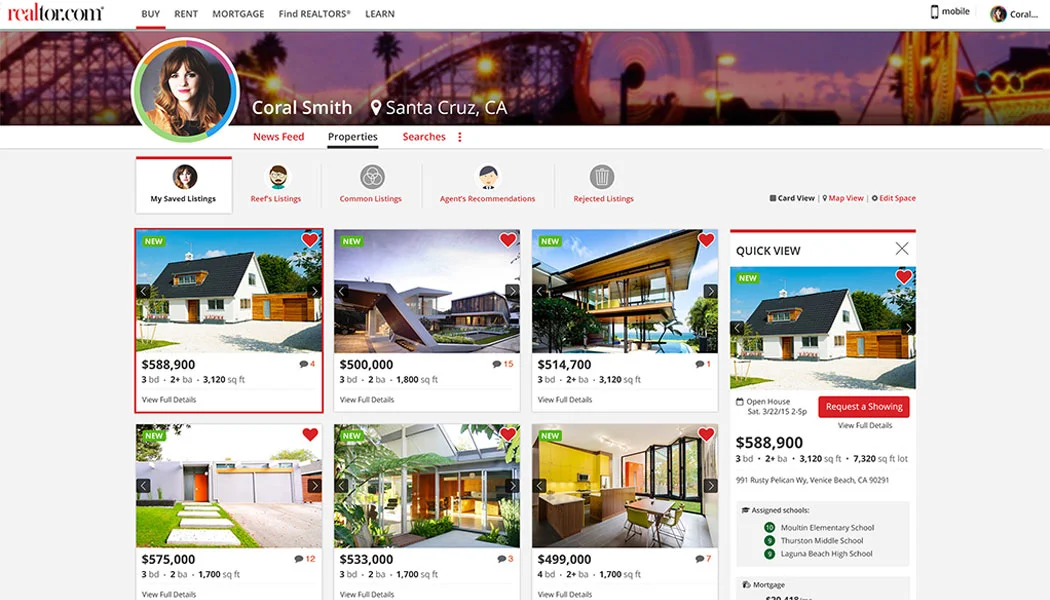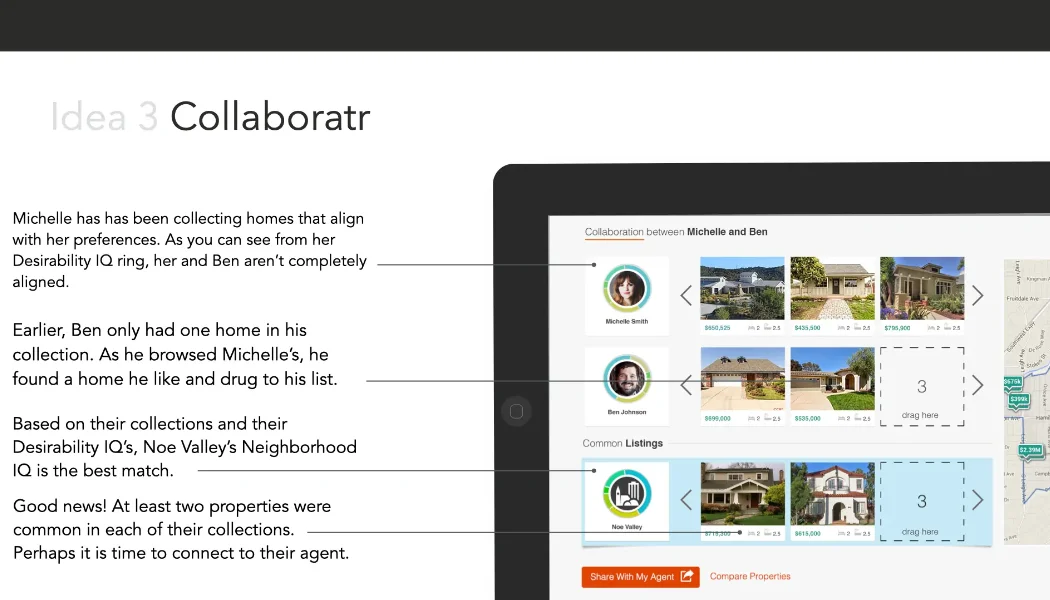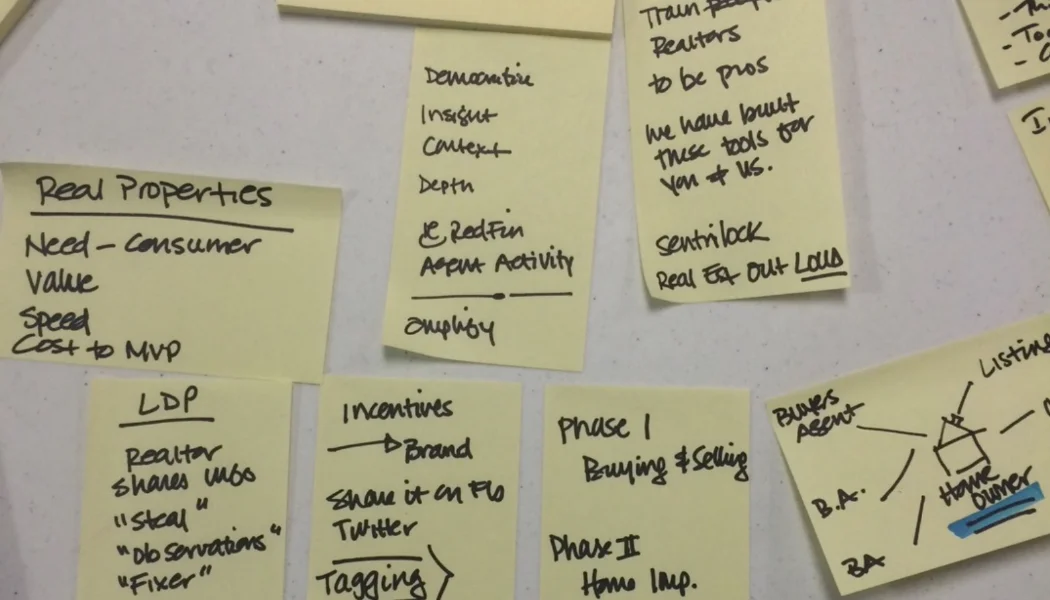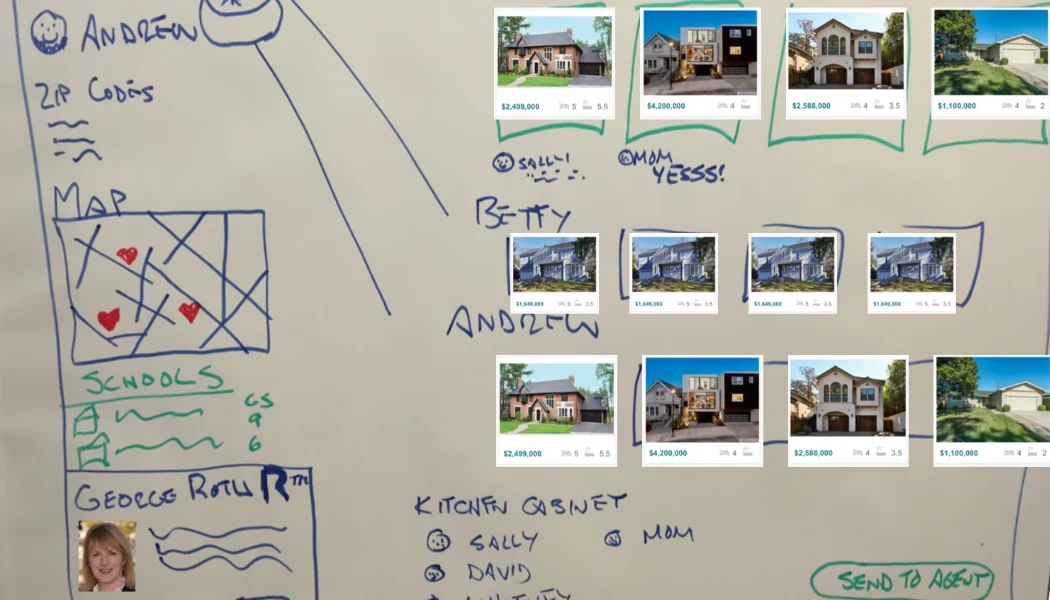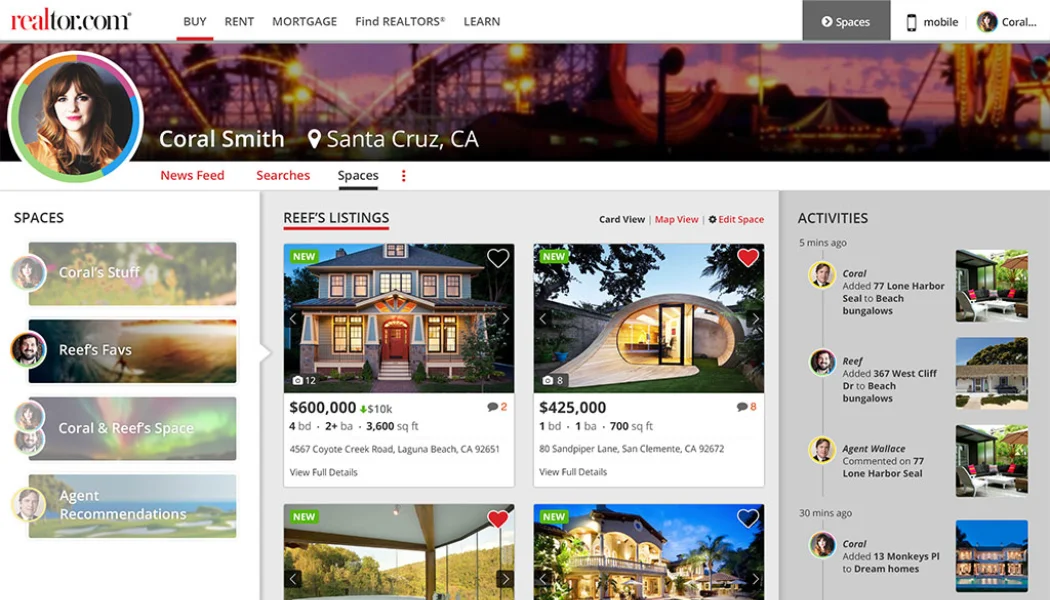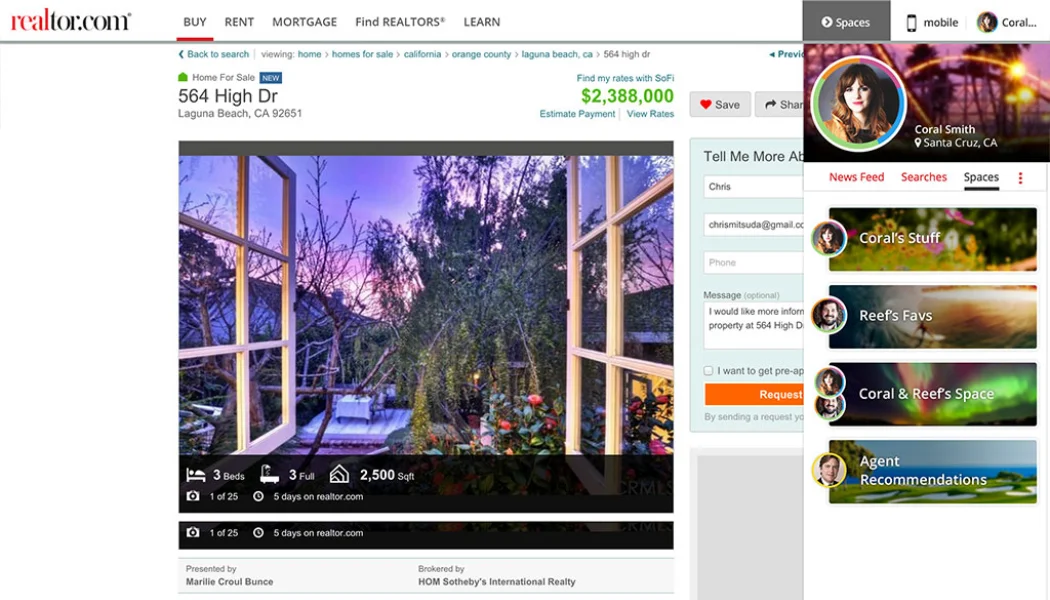Summary
Problem
Homebuyers and realtors needed a better way to connect buyer preferences with real-time inventory, as existing processes were often misaligned and reactive.
Solution
Collaboratr combined AI-driven insights with realtor knowledge to align property listings with buyers’ desired neighborhood qualities.
Impact
The project influenced Realtor.com’s rebrand and strengthened its market position, enhancing user experience and fostering innovation in real estate solutions.
Project Foundations
Overview
Collaboratr was a cross-functional project initiated at Realtor.com through a three-day workshop I created, “Planstorming,”. The workshop involved design, engineering, and product teams working together to generate disruptive real estate solutions focused on customer and realtor collaboration. The real estate industry, with its evolving digital presence, offered an ideal landscape for innovative, user-driven design.
Objectives
The primary objectives of Collaboratr were to address homebuyers’ desires for personalized recommendations and to provide realtors with a tool to match inventory proactively with buyer criteria. By leveraging both AI-driven insights and realtor knowledge, Collaboratr aimed to enhance customer satisfaction and streamline the property search process in a fast-paced market.
Team and Stakeholders
The Collaboratr project involved small cross-functional teams, including design, engineering, and product management. As head of design, Thomas W. Carroll led the team in ideation and prototyping, working alongside senior leadership and realtors to refine concepts and align objectives with broader organizational goals.
Challenges & Barriers
Problem Statement
The lack of tools to align homebuyer preferences with real-time inventory and realtor insights created an inefficient and reactive process. Buyers often missed out on properties, while realtors struggled to match listings with nuanced buyer desires due to limited predictive and collaborative capabilities
Complexity
The project required integrating AI-driven recommendations with human insight from realtors, combining complex datasets (buyer preferences, neighborhood attributes, and realtor knowledge) into a coherent, user-friendly system. Rapid property turnover added another layer of urgency, as the platform needed to identify and suggest listings in real time.
Risks
The project required integrating AI-driven recommendations with human insight from realtors, combining complex datasets (buyer preferences, neighborhood attributes, and realtor knowledge) into a coherent, user-friendly system. Rapid property turnover added another layer of urgency, as the platform needed to identify and suggest listings in real time.
Market Dynamics
Customers
- Homebuyers seeking neighborhood recommendations that align closely with their values and lifestyle.
- Realtors aiming to enhance their service by proactively matching buyers with suitable properties.
- Users wanting intuitive, predictive tools to make informed home-buying decisions without missing opportunities.
Company
- Realtor.com aimed to enhance its position as an industry innovator by offering unique, value-added services.
- The project aligned with Realtor.com’s strategic goal of combining technology with human expertise to lead the digital transformation of real estate.
Competitors
- Competing platforms provided limited predictive matching and neighborhood insight capabilities.
- Collaboratr differentiated by merging AI and realtor expertise, enabling a unique, collaborative approach to real estate recommendations.
Strategic Leadership
Leadership Role
I guided cross-functional teams through rapid ideation, prototyping, and testing phases, fostering a collaborative environment where each team member contributed to concept development. He emphasized iterative experimentation and alignment with company goals to ensure the project met both user needs and business objectives.
Key Decisions
Key decisions included prioritizing machine learning integration for predictive capabilities, encouraging diverse ideation techniques, and ensuring cross-functional input from realtors. These decisions allowed for a balanced approach that highlighted both technological innovation and realtor expertise.
Team Impact
Collaboratr empowered team members to explore innovative ideas in a real-world application, developing new skills in AI-driven design, customer insights, and cross-functional collaboration. This project served as a significant learning experience in agile, user-centered design.
Method and Mastery of Craft
Design Process
The team used generative design approaches, such as rapid sketch prototyping, dot voting, and collaborative ideation. The process began with mapping buyer journeys and analyzing points of opportunity, followed by iterative prototyping and concept testing to refine and validate ideas.
User-Centric Approach
By anchoring the design on buyer preferences and realtor insights, the Collaboratr team ensured that the solution addressed real user needs. The project highlighted a balance of AI-driven personalization with realtor expertise to deliver meaningful, user-friendly recommendations.
Iteration and Experimentation
The team iterated extensively, incorporating feedback from both realtors and homebuyers. Experimentation with various ideation techniques led to a refined, intuitive solution that evolved through real-time user testing and rapid prototyping phases.
Stakeholder Alignment
Cross-Functional Partnership
Collaboratr involved close collaboration with product, engineering, and realtor teams, fostering alignment on shared goals and driving decisions based on collective insights. The partnerships emphasized both technical and experiential expertise to ensure solution viability.
Communication and Alignment
Regular check-ins and collaborative workshops maintained alignment between teams, ensuring that evolving goals and feedback were communicated and addressed. This approach enabled the project to remain on track and responsive to user needs.
Team Development
Team members gained hands-on experience with AI-driven design and customer insights, enhancing their skills in building scalable, customer-centered solutions.
Outcomes & Insights
Results
Collaboratr successfully advanced from ideation to an integrated component of Realtor.com, contributing to a broader rebrand and elevating the company’s reputation in real estate innovation.
Impact
The project set a new standard within the organization, influencing product strategy and demonstrating the potential of AI-human collaboration. This approach reinforced Realtor.com’s position as a leader in customer-centric real estate solutions.
Learnings
Key learnings included the value of balancing automated insights with expert input, the importance of rapid prototyping, and the benefits of structured, cross-functional ideation. These lessons continue to inform my approach to design leadership.
Impact
”In order to deliver on this MVP quickly and efficiently, we will leverage existing designs and current functionality within saved listings and saved searches.
Mitchel LindenSVP, Product
 There’s more
There’s more
to see… check
them out.

